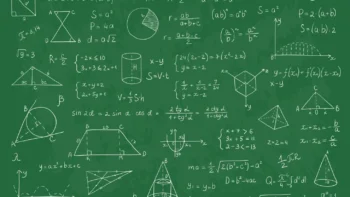Reading Time: 10 Minutes
If you’re preparing for the SAT, congratulations on taking the first step toward reaching your college admission goals! Many students struggle with the math section, but by focusing on the essential SAT Math formulas, you’ll be one step closer to acing this test. With consistent practice, you can learn to apply these formulas quickly and confidently. This blog post is here to help you master the math concepts you’ll see on the SAT. Plus, you can bookmark this page and return to it whenever you need a refresher on these essential topics. Ready to dive in? Let’s go!
1. What’s Covered in the SAT Math Section?
The SAT is currently offered in a new digital format, often referred to as the Digital SAT (DSAT). The College Board created this format to improve the testing experience and make it more reflective of a student’s mathematical abilities. The Digital SAT Math section includes two modules, each designed to measure your math skills in unique ways.
The first module, Math Module 1, includes 22 questions and doesn’t adjust its difficulty level based on how well you answer the questions. In contrast, Math Module 2 is adaptive. This means the difficulty of the questions in Math Module 2 will adjust based on your performance in Module 1, with questions becoming harder if you perform well. This adaptive feature helps ensure that each student receives questions appropriate to their skill level.
2. What’s Missing from the Digital SAT?
One major change in the DSAT is the exclusion of several topics. Certain subjects commonly tested on the paper version of the SAT, such as polynomial remainder theorem and imaginary/complex numbers, are now absent. Additionally, you won’t encounter questions on circle proportionality, the third side rule for triangles, or other similar topics. Probability and standard deviation questions, which were common in the traditional SAT, have largely been eliminated from the DSAT as well.
Concepts like domain, range, and polynomial directional changes are no longer part of the new format. As a result, many students feel that the DSAT is less complex in some areas, but it’s crucial to be aware of the specific topics that remain so you can prepare effectively.
3. What’s New on the Digital SAT?
With the DSAT, students can expect more questions on certain topics, especially quadratic equations and parabolas. You may also see a question on Vieta’s formula, which states that for a quadratic equation, the sum of the solutions is -b/a, and the product of the solutions is c/a.
4. Why Is the Math Section So Important?
The Math section is a critical component of the SAT, contributing 50% of your total score. For many students, the Math section offers the most significant opportunity for improvement. Unlike some of the other sections, math questions have clear right or wrong answers, which means that a thorough understanding of formulas and equations can make a big difference.
The College Board provides a formula reference sheet for the Math section, primarily covering geometric formulas. However, some additional formulas appear so often that it’s worth memorizing them before your test date. Below, you’ll find 35 essential formulas and math concepts to help you succeed on the SAT.
Ace Your SAT Prep! Predict Your Digital SAT Score in 40 Minutes, Totally Free!
Examily.AI!
35 Essential SAT Math Formulas
1. Percentages and Percent Change
Understanding percentages is essential for the SAT. To find a percentage, divide the part by the whole. To calculate percent change, divide the difference between the original and new numbers by the original number, then multiply by 100 for the percentage.
Useful for calculating percentage increases or decreases.
Real-Time Example:
A jacket’s price drops from $80 to $60. Calculate the percentage discount.
Solution:
The price decreased by 25%.
2. Slope Formula
Use this formula to find the slope of a line connecting two points.
Real-Time Example:
Calculate the slope of a hill that rises from 100 feet to 500 feet over a 2-mile distance.
Solution:
So, the slope of the hill is 200.
3. Area of a Circle
Used to calculate the area of circular objects.
Real-Time Example:
You want to create a circular garden with a radius of 5 meters. Calculate the area.
Solution:
4. Pythagorean Theorem
Useful in finding the length of a side in right triangles.
Real-Time Example:
If a rectangular fence is 3 meters by 4 meters, find the diagonal distance.
Solution:
The diagonal is 5 meters.
5. Quadratic Identities
Some useful quadratic identities are: (x² – y²) = (x + y) (x – y) and (x ± y)² = x² ± 2xy + y².
6. Direct and Indirect Proportions
If two quantities increase together, they’re directly proportional. If one decreases as the other increases, they’re indirectly proportional.
7. Averages
To calculate an average, add all values and divide by the number of values. This is especially useful for data-based questions on the SAT.
8. Probability
Probability measures the likelihood of an event occurring and is calculated by dividing the number of successful outcomes by the number of possible outcomes.
9. Surface Area of a Cube
The surface area of a cube is calculated as 6 times the square of one of its sides.
10. Distance Formula
To find distance, use the formula: distance = rate × time.
11. Quadratic Equations
A quadratic equation generally takes the form ax² + bx + c = 0.
12. Standard Deviation
Standard deviation measures the spread of data from the mean. A lower value indicates that data points are closer to the mean.
13. Weighted Averages
In a weighted average, each value has a “weight” that reflects its importance in the set.
14. Systems of Equations
Systems of equations involve multiple equations with shared variables.
15. Functions and Translations
A function is a set of ordered pairs where each input (x) corresponds to one output (y).
16. Completing the Square
Completing the square is a method to simplify quadratic equations.
17. Parabola Vertex
The vertex of a parabola is located at the midpoint of the x-intercepts.
18. Vertex Form of a Parabola
The vertex form of a parabolic equation is given as a(x-h)² + k.
19. Triangle Area
The area of a triangle is found using the formula 1/2 × base × height.
20. Similar Triangles
Similar triangles have proportional sides and identical angles.
21. Systems Without Solutions
Two parallel lines have no solutions because they do not intersect.
22. Finding Intersections
Set two line equations equal to find where they intersect.
23. Function Zeros
The zeros of a function are the x-values where the function intersects the x-axis.
24. Arc Measure
In a circle, the arc measure for an angle is twice the angle’s measure.
25. Undefined Functions
A function is undefined if it has a zero in the denominator.
26. Right Triangle Ratios
Right triangles have ratios between the lengths of the hypotenuse and legs.
27. Circle Equation
The equation for a circle with center (h, k) and radius r is (x-h)² + (y-k)² = r².
28. Absolute Value Inequalities
To solve absolute value inequalities, isolate the absolute value expression.
29. Negative and Fractional Exponents
Exponents can be converted to radicals or simplified.
30. Exponent Rules
Multiply or divide exponents by adding or subtracting the powers.
31. Parallel Lines and Transversals
Parallel lines have identical slopes, while transversal lines cross them.
32. Positive Graph Associations
Graphs with positive associations have positive slopes.
33. Radians and Degrees
Convert between radians and degrees using 180 degrees = π radians.
34. Box-and-Whisker Plots
These plots display statistical data with a focus on quartiles.
35. Unit Circle
The unit circle has a radius of one and is crucial in trigonometry.
Your SAT Success Starts Here—Unlock Your Potential with Examily’s AI-Driven Prep!
18 Essential SAT Math Terms
- PEMDAS: Parentheses, Exponents, Multiplication, Division, Addition, Subtraction.
- Mean, Median, Mode, Range: Describe data sets.
- Integers: Whole numbers, positive or negative.
- Prime Numbers: Only divisible by themselves and 1.
- Pythagorean Triples: Integer sets for right triangles.
- “Y less than X”: Example: “x – 7”.
- “Of”: Indicates multiplication.
- Digits: Number symbols from 0–9.
- Multiples: Products of a number and an integer.
- Factors: Numbers that divide into another evenly.
- Remainder: Leftover from division.
- Consecutive Integers: Numbers in sequence.
- Sum: Total after addition.
- Difference: Result of subtraction.
- Product: Result of multiplication.
- Odd and Even Numbers: Differ by 1.
- Positive and Negative Numbers: Opposing signs.
- Roots and Exponents: Rules for calculations.
Real-World Applications of SAT Math
Memorizing formulas is essential, but applying them is even more important. Consider using flashcards, practice tests, and real-world scenarios to solidify your understanding of these formulas.
How to Effectively Memorize Math Formulas
- Flashcards: Create flashcards for each formula and review them daily.
- Practice Tests: Take SAT practice tests to apply the formulas in real-time.
- Visualization: Associate formulas with real-world objects or situations.
Conclusion
Mastering the essential SAT Math formulas can give you a significant advantage in the exam. By using real-time examples and applying these formulas in practical scenarios, you’ll be well-prepared to tackle the math section with confidence.
Remember to focus on practice, and don’t forget to review both the new and traditional topics as the DSAT introduces some important changes. Good luck with your SAT preparation!





